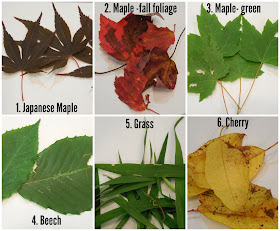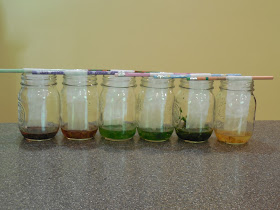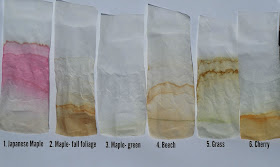The other day I was out in my yard and
noticed something brilliantly red in contrast to the green grass. I
couldn't believe it, a tree was already beginning to change color and
drop its leaves! I love fall, but I don't know if I am quite ready to leave summer behind. Although it did
get me thinking about the colors in leaves and how this was a great
opportunity for science!
Here is a great experiment for any time of year that illustrates why leaves change color in the fall in colder climates. Try this experiment as a demonstration for young students, or as a hands-on project for elementary or middle school.
Here is a great experiment for any time of year that illustrates why leaves change color in the fall in colder climates. Try this experiment as a demonstration for young students, or as a hands-on project for elementary or middle school.
This post contains affiliate links, meaning I receive a small commission from purchases made through these links. Please see disclosures for more information. As well as links from Amazon.com you will find links to Bookshop.org, an online book store that works to support local independent book stores. Shopping through Bookshop links not only supports this website, but can help you support book stores in your area!
Why Do Leaves Change Color in the Fall?
Why do some tree's leaves turn
different colors in the fall? This beautiful act of nature has to do
with the pigments in leaves. You are probably already familiar with
one of the pigments- chlorophyll. Chlorophyll is the pigment that
makes plants green. It is very important in photosynthesis, the
process by which plants make their own food, as it allows plants to
absorb the energy in light.
Although green is the color we
associate with most plant leaves, there are other pigments in plants.
Carotenoids are orange and yellow pigments that are in leaves all
year round. During the growing season these pigments are masked by
the green chlorophyll. As the tree begins to "shut itself down"
or go dormant for the winter, it is not making chlorophyll any longer
and the other colors begin to shine through.
Anthocyanins are pigments that are not
present all year in the leaf, but are produced there as the summer
comes to an end. These pigments are responsible for the reds and
purples we see in fall foliage.
How can we find out what colors are in
a leaf? Chromatography! Chromatography is the process of separating
mixtures, in this case colored pigments. Here is a kid-friendly version of leaf chromatography appropriate for home or school.
You'll find a plan for the entire leaf color experiment as well as student hypothesis and data sheet here.
- Coffee filters
- Scissors
- Pencils
- Tape
- measuring spoons
- isopropyl alcohol
- Clear jars, glasses or beakers
- leaves
- a mortar and pestle (optional)
- Lesson plan with student hypothesis and results sheet (optional)
Leaf Chromatography Experiment
Collect a variety of leaves. I chose different colors just to see what would happen. My hypothesis was that I would see the most variation of pigments in the green tree leaves, like the maple and beech.
Grind up the leaves. This is the fun
part! You can crunch, tear and grind them up with your fingers, or
grind them with a little bit of water in a mortar and pestle. Kids
love using the mortar and pestle and you can get them fairly
inexpensively.
Put the leaves (and any liquid if you've used the mortar and pestle) into your beaker or glass. Add about 2 Tablespoons water and 2 teaspoons isopropyl alcohol in the glass. (Alternative examples of this experiment omit the water and call for heating the alcohol and then covering the glasses with plastic wrap to prevent evaporation. I have done it without heat and plastic wrap many times and it seems to work fine!)
Cut the coffee filters into strips. The
middle of the filter works the best as it is the widest, but any
strip will work. Roll one end of the strip around a pencil. Adjust
the height so that when you place it in the liquid it is just barely
touching. Secure it with a small piece of tape.
Put your strip in the leaf mixture and
let it sit overnight. The next day pull the strips out and
let them dry. Then observe! What do you notice? Look carefully, there
will be tiny stripes of different colors. The most water soluble
pigments will travel the furthest. What pigments do you see in each
leaf? Are you surprised by the results? Why?
I am excited to compare these end of
summer results with the same leaf types in the spring! Do you predict
there will be a difference?
 |
| Some really pretty pigments in the Japanese Maple Leaf (L), and mostly browns in the red Maple leaves (R). |
 |
| Notice the thin line of green pigment (Chlorophyll!) on the bottom of the Beech leaf (L) and the Grass (R). |
For the entire experiment lesson plan including student sheets, click here.
Have fun experimenting! I'd love to hear about your results!
If you are interested in plant STEM, you'll also like to try this seed engineering design challenge. Also check out this collection of autumn science activities.
Tons of great plant science activities on my Pinterest Board!

Have fun experimenting! I'd love to hear about your results!
If you are interested in plant STEM, you'll also like to try this seed engineering design challenge. Also check out this collection of autumn science activities.
Tons of great plant science activities on my Pinterest Board!














No comments:
Post a Comment